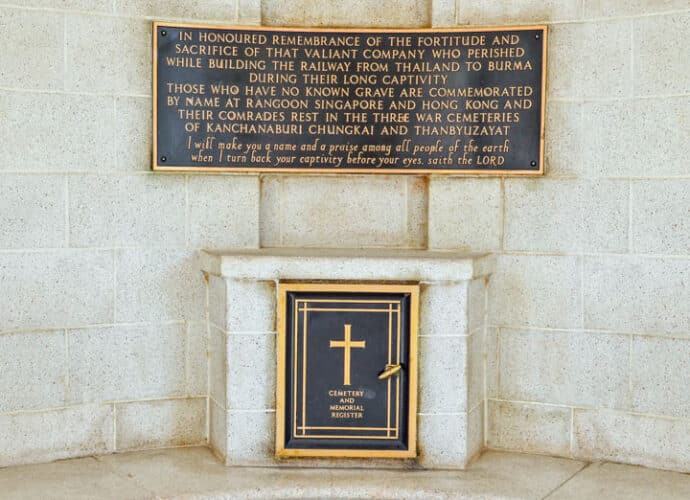KNIL veteran Julius Ernst on the Burma Railway

Kanchanaburi War Cemetery (PHEANGPHOR studio / Shutterstock.com)
You have read the pre-announcement of the Remembrance Day on August 15 in Kanchanaburi, a beautiful tradition that is very rightly maintained by the Dutch embassy in Thailand.
The Burma Railway claimed many lives, but fortunately many foreign prisoners of war, including Dutch, survived that terrible period. That number of survivors is of course getting smaller with time.
One of those survivors is Julius Ernst, a soldier from the Royal Dutch East Indies Army (KNIL). I made an article for this blog about him in 2015 following an interview in Checkpoint, a monthly magazine for and about veterans.
I am pleased to recommend that you read this article again: www.thailandblog.nl/background/julius-ernst-knilveteraan-de-birmaspoorweg
It is now 5 years later and to my great pleasure Julius Ernst is still very much alive and always willing to tell his story about his experiences in Thailand. In April of this year – prior to Remembrance Day in the Netherlands – Julius appeared in a video by NTR SchoolTV. He himself, historical photos and film footage supported by beautifully executed sketches give a good picture of the horrors under which the prisoners of war in Thailand were used as forced laborers.
See the video below:


Coincidentally years ago I started the journey to the famous bridge over the riverkwai and continued to Satani Nam Tok the terminus and walked to the old railway embankment where the rails were already gone and remembered that my uncle had worked here because I knew that of his few stories and it was very hot and I was shivering from the cold, it was very emotional for me.
I myself have also been in Kanchanaburi for a few days and visited the Hellfire pass and the bridge. What many tourists do not know is that the bridge they visit is not the real bridge where it all happened during the war. The bridge was not built over the Kwae but over the Mae Klong (Meklong) a few kilometers before the confluence with the Khwae. When more and more tourists went looking for the 'bridge over the Kwai' after the release of the film in 1957 and did not find it there, the Thai authorities decided in the XNUMXs to rename the upper reaches of the Mae Klong in Khwae Yai and the Khwae in Kwae Noi… Nothing remains of the original bridge but a number of pillars, most of which are submerged. does not alter the fact that the place is of great historical value and the museum and the Hellfire pass are certainly worth a visit
Your statement is only partially correct. It is true that the famous film is nothing compared to what is now being seen in Kanchanaburi. It is also true that the Thai government has renamed the upper reaches where the bridge is located after the Khwae Yai, because of the many tourists.
However, the bridge near Kanchanaburi is actually the original bridge built by prisoners of war. In 1945 it was bombed and partially destroyed. However, this was restored after the war (with Japanese money). Originally the bridge had all arches (which the Japs had brought from Java). However, three arches have not been restored, but have been replaced for a straighter construction. Some pillars will undoubtedly have been renovated and the sleepers and rails will probably also need to be replaced. The same goes for the impressive piece at Wang Pho.
Incidentally, next to this metal/stone bridge there was also a wooden railway bridge. However, none of that can be found now.
The museum at the bridge is nice, but if you're short on time, I recommend the TBRC museum, which is next to the main cemetery.
I went there about 20 years ago with friends and later in 2012 alone with my wife, you could also listen to everything that happened while walking well that was terrible. If you just consider how hot it was there and if you also had to work, that was really impossible and that with minimal food and 18 hours a day. If you had a wound from the bamboo, it usually started to ulcerate and there was almost no care, as they said everything was actually made of bamboo, including the beds.
It's terrible what people can do to each other during a war when they don't know each other at all or have done something to each other.
THIS CAN NEVER HAPPEN AGAIN.
Impressive. Especially in preparation for the 11th commemoration next Saturday. SchoolTV movie shared with thanks.